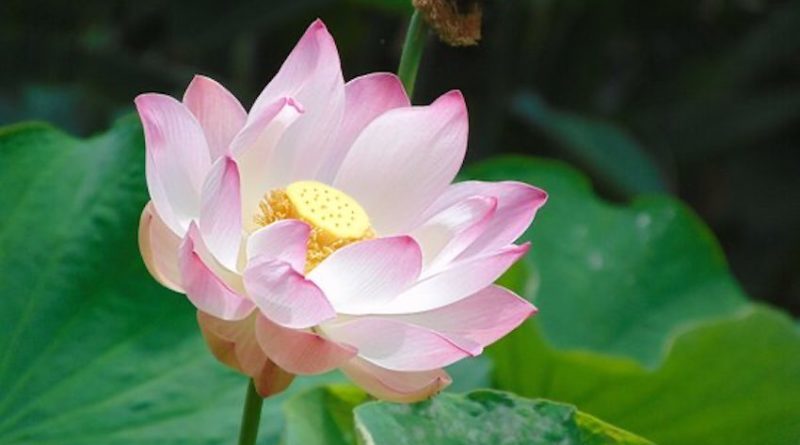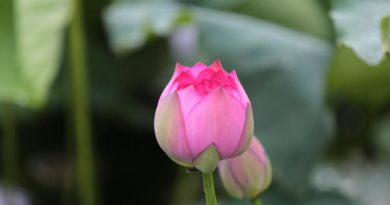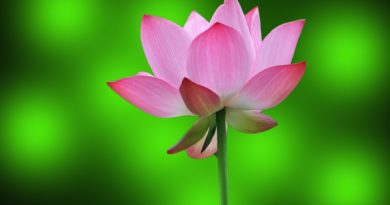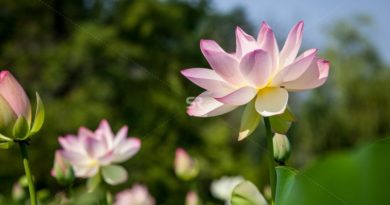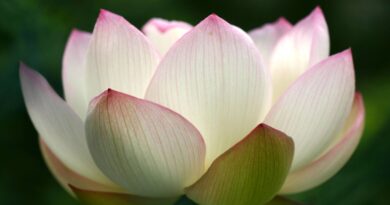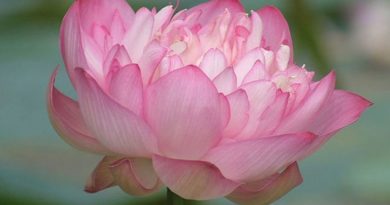DHAMMA RATANA – CHAPTER 14: TYPES OF CETIYA
DHAMMA RATANA – CHAPTER 14: TYPES OF CETIYA
Today is the full-full-moon day of Tanzaungmone, so it is more appropriate to deliver a Dhamma Discourse on Tanzaungmone-month. First we should know the meaning; secondly about the light festival in that month and thirdly the types of cetiya (pagoda). In ancient times, round about Pagan Era, this month was called “Tanzaungmone “Tan” means light or power, “saung” connotes to fetch, “mhone” connotes to destroy or dispel. The full meaning is therefore “to fetch light or power to destroy or dispel darkness”. In those days astronomy was very popular and most people studied it. Moreover this particular month was regarded as the month of kyattika Planet and the light festival was celebrated in honour of the Fire-god, the guardian of this planet. It was believed that, this Fire-god used to descend to earth during this month and the king and his people, as a tradition offered lights to him. The guardians or devas of various planets were worshipped with great respect in those days.
Nowadays the custom of worshipping the guardians of planets is replaced by the light festival offering light to various cetiyas in the Deva world, the Brahma world and the world of human beings. The reason for the change in the manner of worship is due to the elders, well-versed in dhamma scriptures who pointed out that offering lights to cetiyas is more beneficial and meritorious than to the guardian devas.
Culamani Cetiya
Buddha-would-be Prince Siddhatha enjoyed worldly pleasure for 16 years as a young prince and 13 years as a king. At the age of 29 years, while on his way to the Royal Garden, devas created at an interval of 4 months, four omens namely decay, sickness, death and a monk for the Prince. Upon seeing these omens, he realized the sufferings in a human life, became remorseful and renounced the world at mid-night of the same day. On the bank of Anoma River, he cut his knot of hair and threw it into the sky together with his crown and made a vow, “May my crown and the knot of hair hang in the sky if I’m destined to be a Buddha; if not may they fall onto the ground.” The knot of hair and the crown hung in the sky at a distance of one yuzana (8 miles). The king of devas, seeing it through his deva eyes came with a golden flower basket to receive it. He took it to Tavatamsa (the second plane of deva realm) and enshrined it in a newly built cetiya, three yuzanas high. It was decorated with seven kinds of gems and known as “Culamani Cetiya”, meaning cetiya of Buddha-would-be’s hair and crown. People now worship and offer lights to this cetiya, especially in the month of Tanzaungmone and celebrate a light festival in honour of Culamani Cetiya.
Motto: Culamani Cetiya in Tavatamsa
It has a height of three yuzanas
If you wish to see this cetiya with your own eyes, you should practise to attain super-normal power. However it is not much practised by the people nowadays and they believe the existence of this cetiya in the deva world, through the dhamma scriptures. As a matter of fact, to have faith and reverence in this Culamani Cetiya is most significant in worshipping it.
Dussa Cetiya
Another cetiya is in the Ekkanittha Brahma world built by Gatigara Brahma who was a friend of the Buddha-would be during the time of Kassapha Buddha. On learning that Prince Siddattha had renounced the world and was going to be a monk, he offered him eight requisites. That is the first acknowledgment of the 8 requisites for monks. We should have a thorough knowledge of the 8 requisites. Perhaps some interested foreign yogi should enquire, you must be prepared to give a complete account of it. Some may have and some may not have the idea of 8 requisites. They just buy from the shop without enquiring about it. They are (1) Under garment (2) Upper garment (3) a great robe of double layer (4) an alms bowl (5) a razor blade (6) thread and needle (7) a yellow belt and (8) a water filter.
Gatigara Brahma took the Buddha-would be’s garment and enshrined it in a cetiya called “Dussa Cetiya” which is 12 yuzanas high. The Buddha-would-be Prince, being a fully perfected one, adorned the robes neatly. Dussa means an under garment of a prince. The Ekkanittha Brahma realm is the highest in the Brahma world . Although we can not see it ourselves, we can worship it with firm faith and thus gain merits.
Motto: Dussa Cetiya in Ekkanittha
Has a height of twelve yuzanas
During the month of Tansaungmone light is offered to all cetiyas in the realm of human beings. There are three types of cetiyas according to the zatathakatha, namely (1) Saririka Cetiya, parts of living Buddha’s body (2) Paribhoga Cetiya, properties and things used by Buddha and (3) Uddissaka Cetiya, built or made in remembrance of the lord.
The Three Types of Cetiyas
The reason, why Lord Buddha had allowed the three types of Cetiyas to be worshipped when he was alive, was because of the following incident.
Once while the Lord Buddha was residing at Zetawun Monastery, Savatthi He went round the villages. The people living in the Savatthi took flowers, sandal wood and other offerings to the monastery and without seeing Lord Buddha, they put the offertories at the monastery sadly and left. Ashin Ananda reported about this incident to the Lord, then the Lord had allowed to worship the three types of Cetiyas when He was still alive.
The three types of Cetiyas allowed were—-
(1) Saririka Cetiya – parts of His body such as muscles, blood, bones, etc: are worthy of Saririka Cetiya but when the Lord Buddha was still alive must not build a Cetiya.
After the Lord Buddha’s death only it was allowed to build.
(2) Paribhoga Cetiya-Lord Buddha’s belongings such as robes, umbrella, footwear etc, are worthy of Paribhoga Cetiya. Even Bodhi tree is worthy of Paribhoga Cetiya.
(3) Uddissaka Cetiya- Buddha’s images made of marble stones, bronze, wood and paintings can be worshiped as Uddissaka Cetiya.
That was what the Buddha had preached.
Another group of Dika masters classified as follows
(1) Paribhoga Cetiya- enshrined with the requisites used by Buddha
(2) Dhatu Cetiya- enshrined with Buddha’s relics such as hair, teeth, bones.
(3) Dhamma Cetiya- enshrined with dhamma scriptures such as Satipatthana, four Noble Truths, Pathan, Paticca Samuppada (Dependent Origination) inscribed on gold, sliver and bronze plates.
Suppose a foreigner would like to build a Cetiya, it is wise to suggest to build a dhamma cetiya. The reason is, it is easy to get dhamma scriptures whereas relics like hair, bones, teeth available in the present days may not be genuine. Moreover there is a saying that “a word can be regarded as a Cetiya”.
Five types of Cetiya
Some Athakatha masters categorise cetiyas into five types.
(1) Paribhoga Cetiya- enshrined with requisites used by the Buddha
(2) Dhatu Cetiya- enshrined with the relics of the Buddha
(3) Dhamma Cetiya
(4) Uddissaka Cetiya- built or made in remembrance of the Buddha
(5) Pada Cetiya- foot prints of the Buddha
People built mostly Uddissaka cetiyas and also worship images, paintings and pictures of Buddha. Pada or Foot-prints Cetiya is the foot-print made by Buddha’s resolution to indicate that the lord had been there in his life-time. The light festival celebrated in honour of cetiya on special day, is a meritorious custom. While offering or after offering to cetiyas, it is of great importance to develop a wholesome disposition. How to do so? Contemplate vipassana meditation. Offering and worshipping should not be done as a custom or as a matter of duty. It should be accompanied with reflection upon the innumerable attributes and power of the Lord with faith and respect. You gain more merits if you offer light, alms, flowers, etc. to cetiyas as if you do so to a living Buddha. When cetiyas are built in unsuitable and improper places, people may not pay respect and worship, thereupon they commit demerits instead of merits. It is of utmost significance to build cetiyas in appropriate places where people will like to worship with obeisance.
Three Events
As a matter of fact, there are three events which could not be undone once they have been done; firstly the first marriage, secondly the construction of cetiyas and thirdly tattoo marks on the body. In Myanmar Buddhist culture, marriage especially the first one is considered as a great importance in one’s life. The broken marriages are not readily accepted by the society. However in other cultures, it is not so. Anyway they do recognize the serious social and economical problems faced by the estranged or separated husbands and wives and also by the children of broken families.
Cetiyas once constructed are not to be destroyed or taken down. If it is too old or damaged by some causes such as storm and earthquakes, and unholy persons, it is not to be destroyed but to enshrine it in the new cetiya. To destroy or damage a cetiya is considered as an act of demerit and it can even send one to apaya. The reason is that this act of demerit is counted as the same as killing the Buddha and at the same time it is a disrespect and damage to His attributes. Myanmar government takes a great care in reconstructing the old cetiyas without committing the unmeritorious act. There were many cases of death and also economic and social failures of the persons who unrespeetfully destroy cetiyas.
Young men like to have tattoo marks on their body, believing that it will prevent danger or as an attraction. As nothing results from the tattoo marks as expected though they are now over 30 or 40 years of age they do not like the tattoo marks any more. Nevertheless the ugly marks could not be removed at all. However the modern young people no longer indulge in making tattoo marks.
Cetiya and Vipassana
Offering such as alms, light, flowers, etc., to cetiyas must be made with faith and respect, thence your mind will become peaceful and you develop more reverence to the Buddha. Offer dana to cetiyas as if you were offering to the living-Buddha. Thus you gain meritorious benefits and there arises joy. Thereupon it is most opportune for you to contemplate vipassana meditation. Note what is distinct to you, if not, your concentrations will lapse. When you note here and there in your body, instead of fixing at one distinct manifestation, dhamma will not progress. Meditation instructors may guide you in various ways, however you choose what is most suitable to you and note it. If the joy (piti) is more distinct then you note that joy. Rev: Mahasi sayadaw had instructed how to contemplate on offering dana to cetiyas. Here is a verse composed by him.
Motto: We have offered dana to cetiyas and gained merits many a time before
However the present dana we enjoy more.
While thus enjoying, contemplate becoming and dissolution.
Perception of becoming and dissolution results in comprehension of anicca
Comprehension of anicca leads to apprehension of dukkha
The benefit of apprehending dukkha is the conception of anatta
Conception of anatta swiftly sends one to nibbana,
While contemplating the joy of offering, you attain the Nama-rupa-pariccheda Nana as you recognise the enjoying; mind as a separate entity from the sitting body. The noting mind is nama and the sitting body is rupa. Thus you realize that there are nama and rupa only in your body and that no “I” exists. The conventional term “I” in the conversation is used just for the sake of convenience. Whereupon your dispel the erroneous view of atta and that of the five aggregates. You, therefore, gain a firm establishment in dhamma. So there is no more danger of suffering in apaya. How long it will take a yogi to attain the Nama-rupa pariccheda Nana. If diligently practised according to Rev: Mahasi Sayadaw’s guidance, it will take 2 to 3 days. If concentration is not strong and contemplation is sporadic you might need 4 or 5 days.
As a matter of fact if the concentration is not yet developed, yogi may not perceive well while noting “rising”, “falling”, “sitting”, “touching”, etc:. Rising abdomen may be taken as “my abdomen”, it is “I” who sit, it is “I” who note, etc: By virtue of repetitive practice, concentration is strenghtened, and yogi is now aware that “rising” and “noting” are two separate entities, “falling” is separate entity; “sitting”, “touching” are distinguished from the noting mind. The foreign yogis could also differentiate nama and rupa, however they do not know how to express. Some said, “Before, there was only one person. Now I perceive two separate persons, one “rising” and another “noting”, Myanmar yogi could differentiate nama and rupa quicker than the foreign yogi, therefore they progress in dhamma. The instructor points out and explains to the foreign yogi that they have progressed in dhamma since they can differentiate nama (the noting mind) and rupa “rising” (abdomen).
Some foreign yogi had practised vipassana meditation for nearly ten years, nevertheless nothing is vivid to them. They tried various ways of contemplation but not the correct method. Determined to search for the right method, they come to Myanmar and practise vipassana meditation. It is, therefore, a golden opportunity to be a Myanmar. Since the language, culture and customs are different, great care must be taken in instructing them how to meditate. I am certain that the translater for the foreign yogi perfectly understands it. Sometimes foreign yogi would like to know why they are slow in gaining dhamma. Meditation instructor has to be wise in answering it in order not to discourage them. When they understand the correct method there is improvement in concentration within method, a week and they gain dhamma at the end of the month.
At the Piccayapariggaha Nana Stage, yogi is aware of the fact that the enjoyment of joy is the cause and the noting is effect. Thus he can differentiate cause and effect. At the Sammasana Nana Stage, the feeling of joy is sometimes very distinct and sometimes not. Thereupon yogi reflects thus “All phenomena are impermanent i.e. anicca”. At Udayabbaya Nana Stage, piti (joy) arises and disappears i.e. becoming and dissolution. This process of becoming and dissolution manifests so swiftly with the strengthening of concentration and it again appears to yogi as suffering dukkha. Moreover it is uncontrollable and carries on of its own accord, therefore it is anatta. According to one’s own perfection, one will attain nibbana after comprehending these three characteristics distinctly.
After listening to this dhamma discourse on “Types of Cetiya”, may you all be able to practise in compliance to the Buddha’s instruction. With diligent contemplation may you all immediately realize your most aspired nibbana, which is free from all sufferings, by practising with ease.

